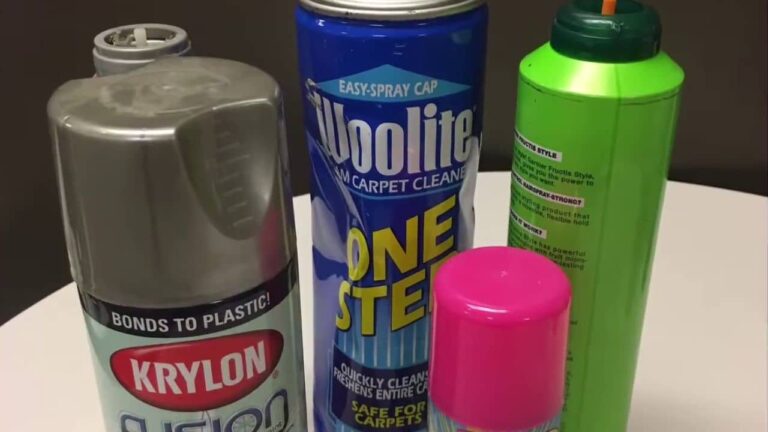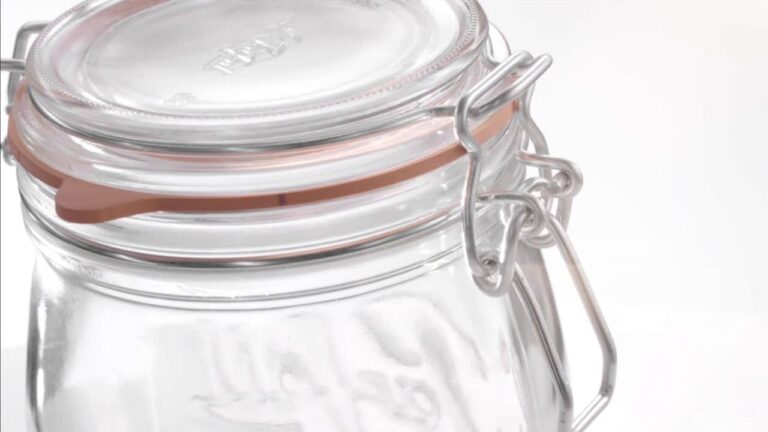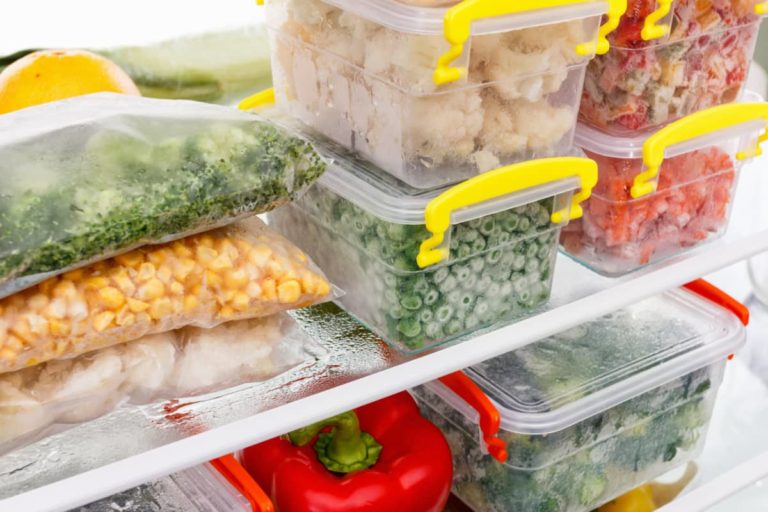Can You Microwave Vintage Tupperware? Here’s The Answer!
While it’s true Tupperware is an old invention, it was a force of nature half a century ago. Perhaps that’s why it was named the greatest invention of the 20th century by the Guinness Book of World Records too.
Nevertheless, does that mean vintage Tupperware is as good as gold? Can you microwave vintage Tupperware?
No, you should never microwave vintage Tupperware no matter what. If you own old Tupperware, check for the microwave-safe symbol of 3 to 5 wavy lines first. An even better method is to check for numbers #2, #4, or #5 as it denotes safe plastics as opposed to #3, #6, or #7. Alternatively, don’t use Tupper boxes sold before 2010 March to avoid BPA.
Read on to find out exactly the type of Tupperware that’s microwave-safe and the ones to avoid for food storage and heating. We’ll also simplify the controversial topic of BPA in older Tupper containers in this post.
Let’s investigate!
Why Vintage Tupperware Isn’t Microwave-safe: the Shocking Reasons
Vintage Tupperware containers aren’t microwave safe. Why? They contain toxic substances linked to cancers, birth defects, and hormonal imbalances.
Here’s why you shouldn’t use your old Tupperware containers for food storage:
Presence of toxic metals
Old Tupper boxes often contain arsenic, cadmium, zinc, nickel, and lead. For the unversed, these can cause bone poisoning, cancers, and organ failure when microwaved.
Damaged Tupper containers are dangerous
When you microwave plastics with scratches, cracks, or warps, they can make you sick in the long haul. Why? Oftentimes, defects like these can entrap bacteria. On top of that, they can also leach hazardous chemicals into your food when heated up.
Foods may have a higher boiling point
Do you know heating water in vintage Tupper is as awful as reheating food in it? Besides, foods with fats and sugars can reach extremely high temperatures with high heat. As a result, they melt the plastic when you serve in it even if you didn’t microwave it.
Does Vintage Tupperware Have Bpa?
Yes, Tupper containers made before 2010 have a high chance of containing the toxic material called BPA or Bisphenol-A. Furthermore, it’s a dangerous compound that can harm your brain, prostate, and breasts.
First off, Tupper containers were invented in 1946. To put that into perspective, that’s long before the age of information highway or green living. Moreover, almost all polycarbonate plastic manufacturers in the 60s heavily relied on BPA too.
Hence, old Tupper boxes and plastic containers may be loaded with toxic substances like BPA that were unregulated then. However, you needn’t worry the same about Tupper food storage boxes at this age. According to official reports, “As of March 2010, items sold by Tupperware US & CA are BPA free”.
To check if your Tupper is BPA-free, crosscheck the recycling numbers under the container. If you don’t know how to do so, scroll over to the next section, and I’ll teach you all about it.
What Is the Most Sought-after Vintage Tupperware?
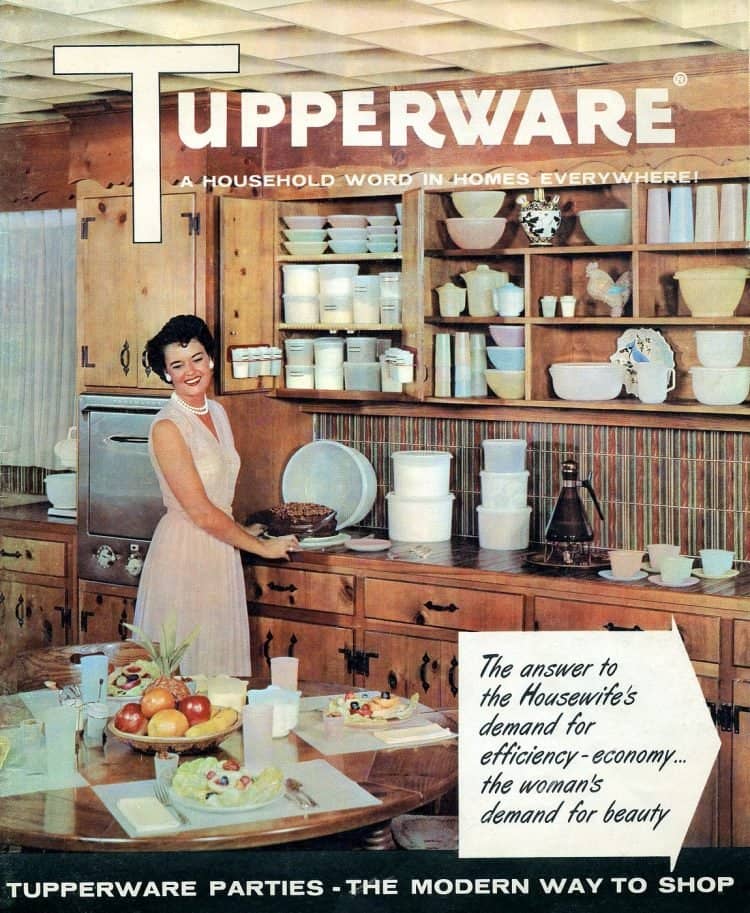
The most coveted Tupperware today is the bell tumblers. Moreover, they’re so high in demand because these containers were the first Tupperware products that caught the public eye back in the day.
Do you know most Tupper boxes cost around $2 back in the late ‘40s? Nonetheless, vintage pieces in premium condition can get you up to $60 nowadays!
Still curious about old Tupper containers? The following list will reveal the cost of most bankable Tupperware today (prices indicated are per unit):
- Bell Tumblers cost up to $35 today.
- Wonderlier bowls may fetch up to $60 now.
- The Millionaire Collection Salt and Pepper Shakers can get you $45 nowadays.
- Vintage Servalier Astro Bowls often sell for $15 to $20 these days.
- Old Cake Takers are available online from $20 to $25 at present.
- Condiment Relish Caddy can bring in up to $15 in this day and age.
- FlatOut Tupper Containers go for even $25 at the moment.
Which Vintage Tupperware Is Toxic?
Tupperware with prints and designs are the most toxic ones to watch out for now. If you’re looking for specifics, the Daffodil Yellow measuring cups are the most hazardous.
A prominent health advocate Tamara Rubin tested Tupper containers from decades ago to find the truth about them. For that, she used XRF equipment to detect and gauge toxins in the measuring cups. As a result, she found shocking levels of zinc, iron, arsenic, lead, and titanium in these containers.
How Can You Tell If Old Tupperware Is Microwave-safe?
There are two ways to ensure the Tupper container or any other plastic you’re using is microwaveable today. You can do so by checking numbers and symbols under the container.
Examples of microwave safe symbols
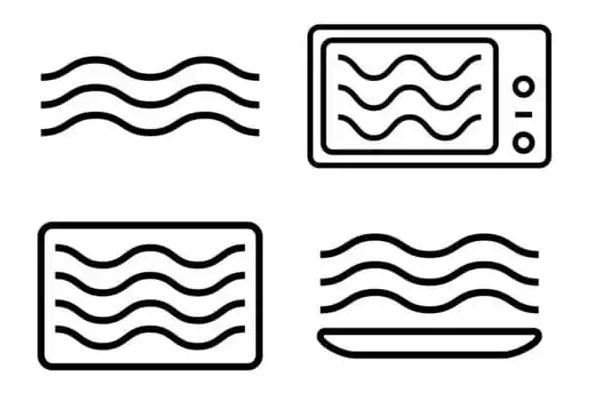
Numbers on microwaveable food storage boxes
Not all plastic food storage boxes are harmful to your health, and the same holds true for Tupper boxes too. According to the Food Packaging Forum, labels help you identify safe from unsafe containers.
For your information, containers with plastic numbers #1, #2, #4, and #5 generally don’t contain any BPA. To keep off BPA, lookout for a ‘BPA-free’ remark on the label under the container. As a rule of thumb, plastic containers, including Tupper boxes with numbers #2, #4, and #5, are safe for storing and heating food.
Here’s what you need to know:
- #2 denotes High-Density Polyethylene or HDPE.
- #4 represents Low-Density Polyethylene or LDPE.
- #5 stands for Polypropylene or PP.
On the contrary, any Tupperware with numbers #1, #3, #6, and #7 aren’t generally safe with dishwashers, microwaves, or food storage.
Microwave-safe symbol
Another sure-fire way to stop using unsafe Tupper boxes accidentally is by checking for microwave-safe symbols.
While the standard symbol for microwave-safe containers indicates three to five waves, it’s not a hard and fast rule. Sometimes, you would see a microwave symbol indicating it’s safe.
Alternatively, you might even notice a cross mark over the same symbol, suggesting it’s unsafe for microwaves.
Stop Microwaving Vintage Tupperware
Let’s Draw the Curtain on Microwaving Vintage Tupperware
Tupperware, a brand that has been a game-changer in the food storage industry for over 70 years, was introduced around the same time as microwaves. Consequently, vintage Tupperware containers were likely not designed with microwave heating in mind!
However, the landscape has changed significantly since then. Today, most Tupperware products are equipped to handle not just storage, but also dishwashing and microwaving. As a safety precaution with older Tupperware, it’s crucial to scrutinize for microwave-safe symbols and numbers as we’ve previously discussed.
Keeping this in mind, I strongly recommend rejuvenating your kitchen with the Tupperware Heritage Collection 36 Piece Food Storage Container Set in Vintage Colors, available on Amazon. This set marries the nostalgic aesthetics of vintage Tupperware with the safety and functionality of modern designs. Each container in this set is dishwasher safe, BPA free, and importantly, built to be microwaved. They not only carry a vintage touch to cater to your aesthetic preference, but also ensure that you can use them without any worries in the microwave.
So, why not step into the new age of Tupperware, where you can bask in both the nostalgic charm and the modern convenience it offers?
Sources
- Tupperware: official reports (BPA Free)
- Sweet and Savory: Your Vintage Tupperware May Be Worth Some Extra Money
- Tamara Rubin: Stop using your vintage Tupperware
- Food Packaging Forum: Which plastic food containers are safe to reuse?


